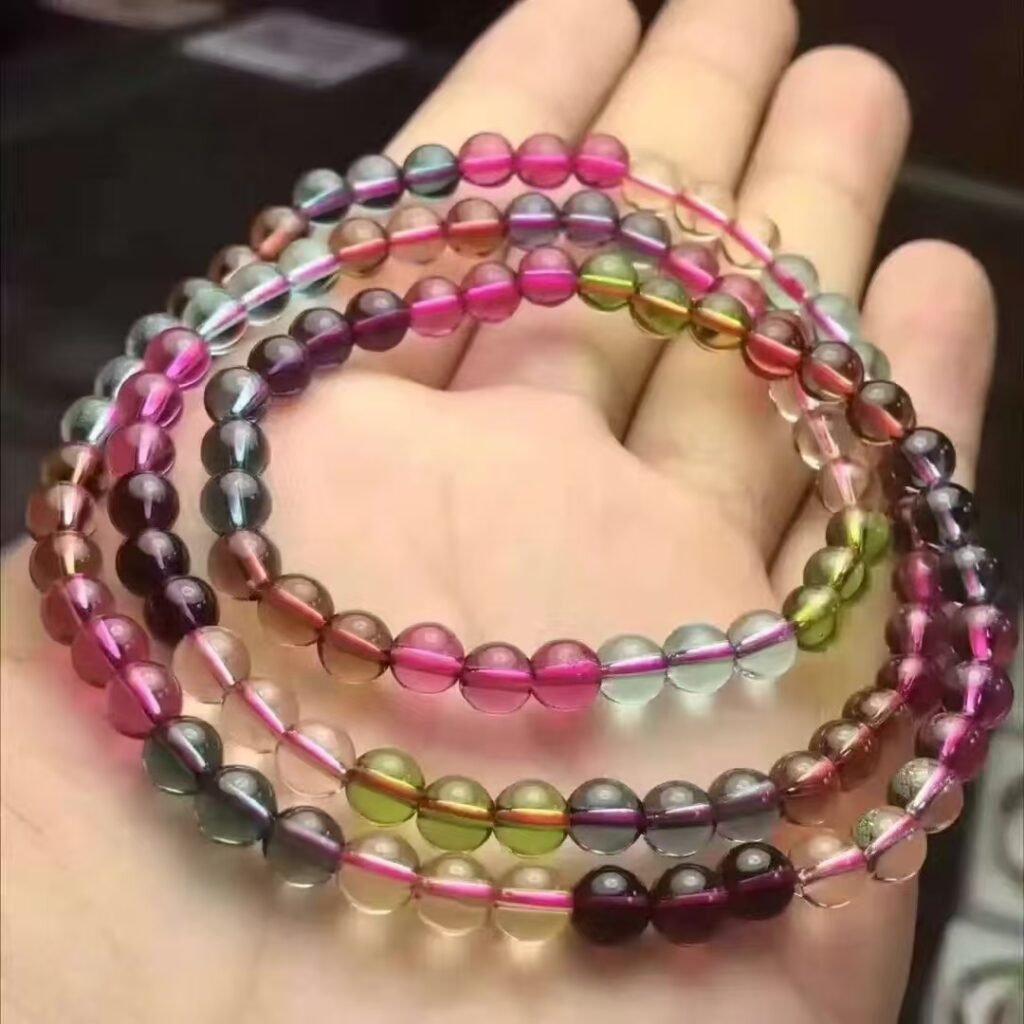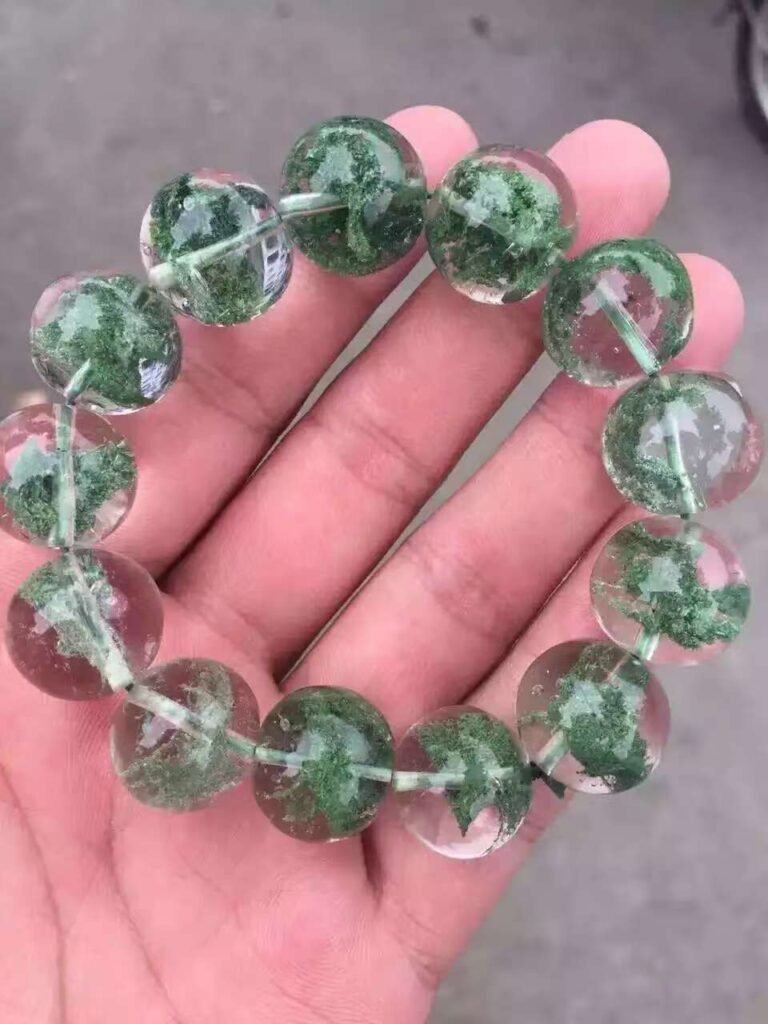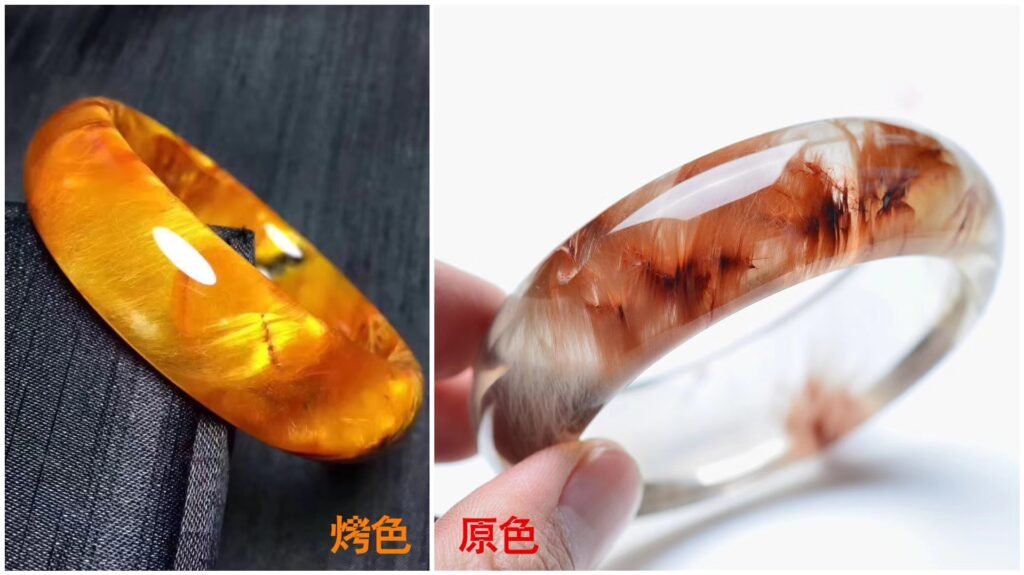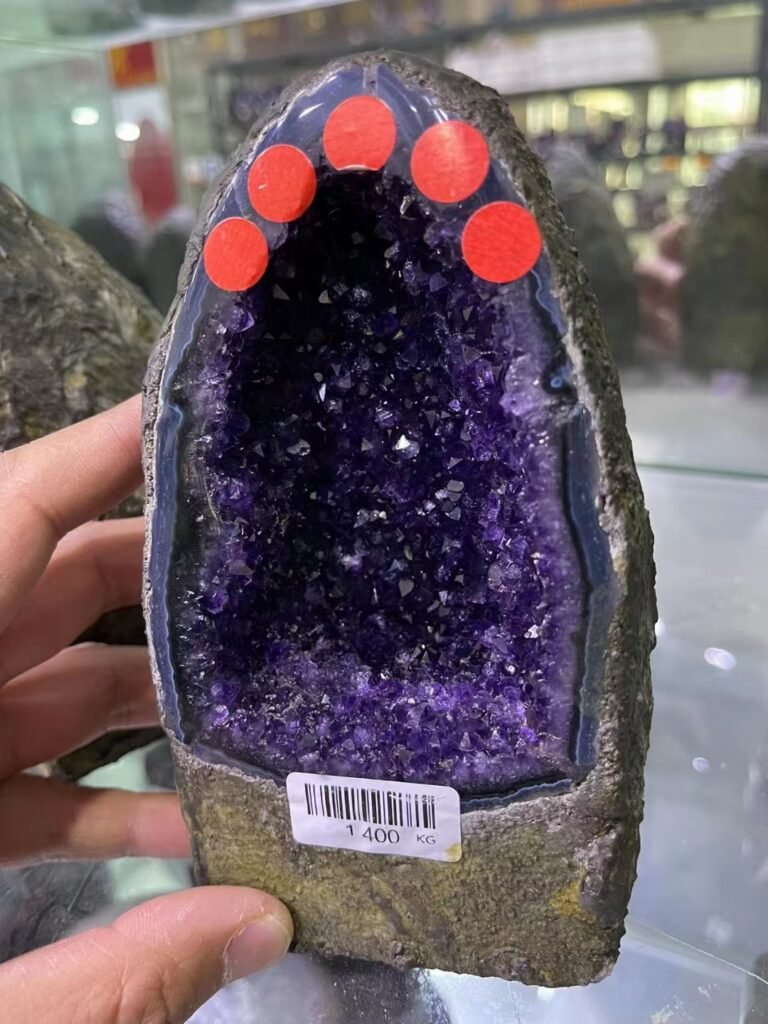As a crystal collecting enthusiast, I deeply understand the frustration of purchasing counterfeit products—wasting money and dampening one’s passion for collecting. However, many “identification tips” circulating online are either oversimplified, fundamentally incorrect, or even misleading for novices. In this guide, I will combine practical experience to teach you how to avoid common misconceptions and conduct preliminary visual screening of crystal authenticity.
Part 1: Debunking Two Classic Myths!
Myth 1: “Coolness Equals Natural Crystal”
Many claim that natural crystals feel persistently cool to the touch, while fakes do not. The truth is:
- Subjective perception is unreliable: Hands are not thermometers—perceived “coolness” varies with ambient temperature and material differences.
- Glass can deceive: Glass imitations also feel cool. Online purchases often arrive insulated, so both genuine and fake crystals may feel cold upon unboxing.
Myth 2: “The Universal Validity of the Hairline Double Image Method”
While crystals exhibit double refraction (viewing a hair through them produces a double image), strict conditions apply:
- Diameter must exceed 3.8 cm: Only large, flawless crystal spheres show clear double images.
- Irrelevant for jewelry: Beads (≤2 cm) or ring stones cannot be tested this way. Blindly applying this method leads to false conclusions.
Part 2: Scientific Authentication: Category-Specific Identification
Crystals vary widely, requiring tailored identification approaches. Based on mineralogical characteristics, common crystals fall into 8 categories:
- Solid-color crystals (e.g., amethyst, clear quartz)
- Phantom inclusion crystals (e.g., green phantom)
- Rutilated crystals (e.g., golden rutilated quartz)
- Enhydros (containing natural water bubbles)
- Dendritic/landscape agates
- Composite mineral crystals
- Geode specimens
- Cross-category gemstones (e.g., tourmaline, garnet, aquamarine—marketed as “crystals” despite differing silica structures)
Key Note: Category 8 are technically not “crystals” (SiO₂ structure), but market practices now classify them as such, necessitating separate authentication.
Part 3: Practical Techniques: Countering Counterfeits by Category
1. Solid-Color Crystals: The 7 Natural Hues
Natural solid-color crystals exist only in 7 colors: clear, pink, smoky, yellow, purple, ametrine (purple-yellow), and rare green.
- Color elimination: Red, blue, or orange solid-color crystals are fake—no natural counterparts exist.
- Texture inspection: Natural crystals often show inclusions (cotton, fractures, or growth lines); glass imitations appear unnaturally flawless.

(Glass Imitation: Tourmaline Simulant)
- Color gradient test: Place on white paper. Natural stones exhibit gradients (e.g., amethyst’s color zoning); uniform hues suggest synthetics.
- Hardness test (use cautiously): Crystals (Mohs 7) scratch glass (5.5). Risk of damage—reserve for low-value samples.
- Weight check: Excessively light (acrylic) or heavy (cubic zirconia) items are suspect.
2. Inclusion Crystals: Growth Patterns Matter
- Inclusion integrity: Natural inclusions are fully embedded. Surface “stickiness” or holes may indicate injected dyes or resin (e.g., fake green phantoms).

(Green Phantom Quartz Simulant)
- Color alarms: Overly vivid phantoms (neon green) or rutilated quartz (uniform gold) may be dyed or heat-treated. Check pigment accumulation in cracks.

(Left image: Heat-treated Golden Rutilated Quartz;Right image: Natural Rutilated Quartz)
3. Geodes: Spotting “Frankenstein” Fakes
- Glue detection: Shine a light on edges to spot adhesive reflections. Wipe seams with a damp cloth—color transfer indicates dye residue.

(Composite Amethyst Geode)
- Dye test: Excessively dark amethyst geodes may be spray-painted. Scratch gently with a knife; peeling layers reveal artificial treatment.
4. Cross-Category Gemstones: Avoid Overpriced Substitutes
- Price logic: Aquamarine or tourmaline (higher-value gems) won’t be sold as cheap “blue crystals” (likely dyed glass).
- Hardness comparison: Tourmaline (7.5) is harder than quartz. Use scratch tests to differentiate.
Part 4: Final Advice: When in Doubt, Trust Science
- Certificates rule: For high-value pieces, demand reports from GIA, IGI, or other reputable labs.
- Vet sellers: Choose vendors offering “10x refund guarantees” and retain purchase records.
- Intuition check: “Rare” claims paired with steep discounts (e.g., “neon blue crystal”)? Likely scams.
Conclusion
Crystals derive their allure from nature’s artistry, not human embellishment. By mastering scientific methods and maintaining rational judgment, collectors can navigate this journey wisely. Remember: True beauty withstands time and scrutiny.
Engage with us: What pitfalls have you encountered in crystal collecting? Share your stories in the comments!
